TSA Officers Just Revealed the 6 Things They “Never Do When Flying”
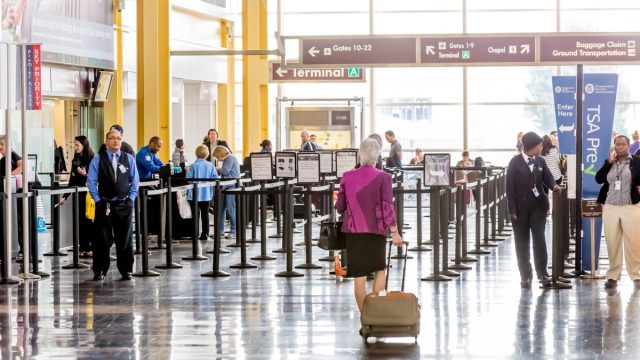
There’s a standard set of rules when it comes to airport security. For those of us who travel often, Transportation Security Administration (TSA) requirements are second nature, and we’re able to pass through a checkpoint with ease. But aside from the common sense no-no’s, there are also a few unspoken rules at airports. Now, TSA officers are sharing six things they never do when flying, both at checkpoints and while making their way to the gate. Read on for their advice on making your next trip that much smoother.
RELATED: 7 Surprising Items TSA May Flag You for at Airport Security.
TSA agents don’t make jokes that could be misinterpreted.
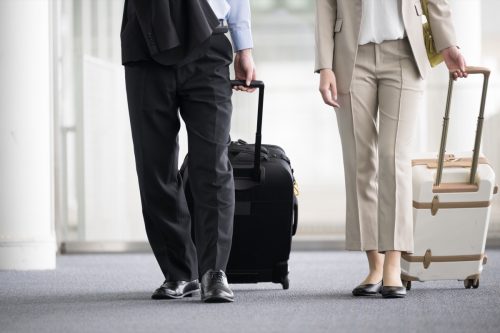
Since we were kids, we’ve been taught to “think before we speak,” and that certainly rings true at the airport. In a new press release, TSA officers explain why they never crack jokes about sensitive issues.
“Do not joke about having an explosive device or claim that you’ve got a bomb with you,” the release reads. “The next thing you know, you’ll be having a very serious conversation with a local police officer and you may not make your flight.”
RELATED: TSA Announces It Will Flag Certain Passengers for Extra Screening.
They never put certain items on the X-ray belt.
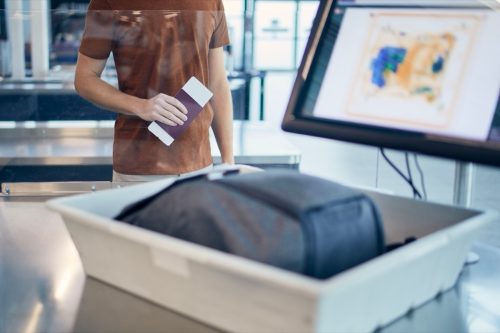
When you get to the X-ray belt in the security line, it’s easy to become frazzled trying to take off your shoes and jacket—while also sorting what needs to go in the bins.
TSA officers note that you can make your life a bit easier by being thoughtful about this process. Agents never place small items directly on the belt, including phones, keys, and boarding passes.
“Anything else that is small will likely fall between the conveyor belt’s rollers and can be difficult (or impossible) to retrieve,” they explain, adding that you should opt for one of the small bowls or bins instead, or skip this step and keep smaller items in your carry-on.
In addition—while it seems like common sense—TSA officers never put kids or pets through the X-ray machines.
“Never put your pet or child through the checkpoint X-ray unit. (Yes, it happens.) No need to expose them to X-rays,” agents say. “Remove your pet from its carry-on case and remove your child from its carrier. Carry them through the metal detector.”
RELATED: 10 Airport Security Secrets TSA Doesn’t Want You to Know.
TSA officers don’t use their mouth to hold items.
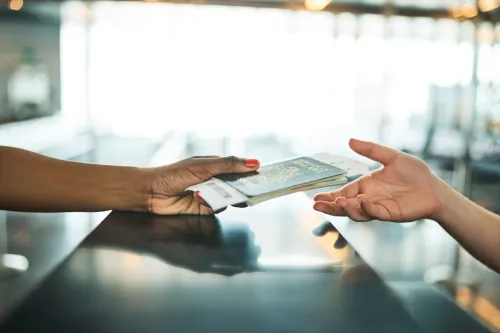
While this may sound silly, many of us are guilty of using our mouths to hold something for a moment, especially when in a rush at the airport. But TSA officers warn this is another habit they avoid at all costs.
“Never use your mouth as an extra hand,” they say. “Your ID is handled by others and goes into a credential reader along with thousands of other IDs. Then you put it into your mouth while you fidget with your phone? Gross.”
They avoid bringing prohibited items.
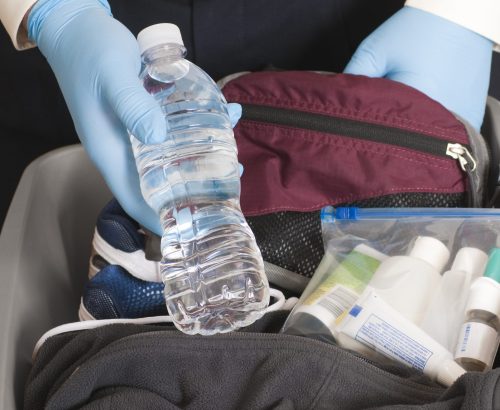
TSA has a full list of items you can and can’t bring with you through security (which you can check using the agency’s What Can I Bring? tool). But while we all do our best to avoid packing these items, sometimes we forget about the plastic water bottle we brought with us on the car ride to the airport.
However, TSA officers don’t bring full water bottles to the checkpoint. Instead, they recommend bringing an empty bottle or another reusable insulated container that you can fill once you get through security.
“It’s a great way to refill it with fresh water, help the environment and save a few bucks by not having to purchase it at the airport,” agents say.
The other thing they never bring to a security checkpoint? A firearm.
“If you want to travel with your gun, the proper way to pack it is unloaded inside a locked hard-sided case and declared at your airline counter for the gun case to be transported in the belly of the aircraft,” the agents explain.
RELATED: For more up-to-date information, sign up for our daily newsletter.
Officers also have recommendations for what you should always do.
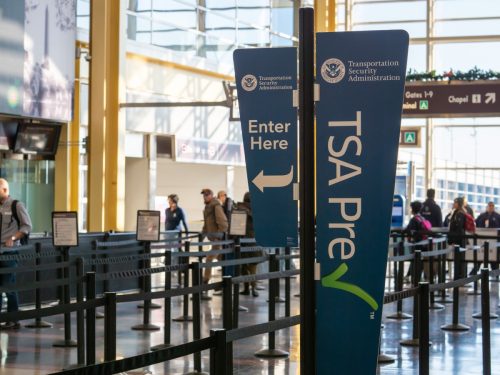
You know what not to do, but what about the things you should be adding to your to-do-list?
TSA officers say before you leave for the airport, make sure the name on your boarding pass matches your ID (as opposed to a nickname), and download the myTSA app, which can let you know how long the wait is at a checkpoint, and inform you of delays at your airport.
Being mindful while you get dressed is also important: TSA officers recommend that you wear shoes that are easy to get on and off—and socks! Of course, if you enroll in TSA PreCheck, you don’t have to worry about this: You’re allowed to leave your light jacket, belt, and shoes on.
Lastly, while a long security line might seem overwhelming at first, it’s a good opportunity to get yourself organized. Officers stress that your phone should go in your carry-on. If you put it in the bin, it will be touching the same surface where people put their shoes. But beyond sanitary concerns, having yourself successfully set up for security lowers the probability that you’ll need extra screening.
“If you find yourself in a checkpoint line, use that time wisely,” agents say. “Remove all items from your pockets and place them into your carry-on bag. Empty your pockets completely. That means everything, even non-metallic items from tissues to breath mints. This helps avoid pat-downs. We know that travelers don’t like to receive pat-downs. TSA officers aren’t too keen on needing to conduct pat-downs either.”